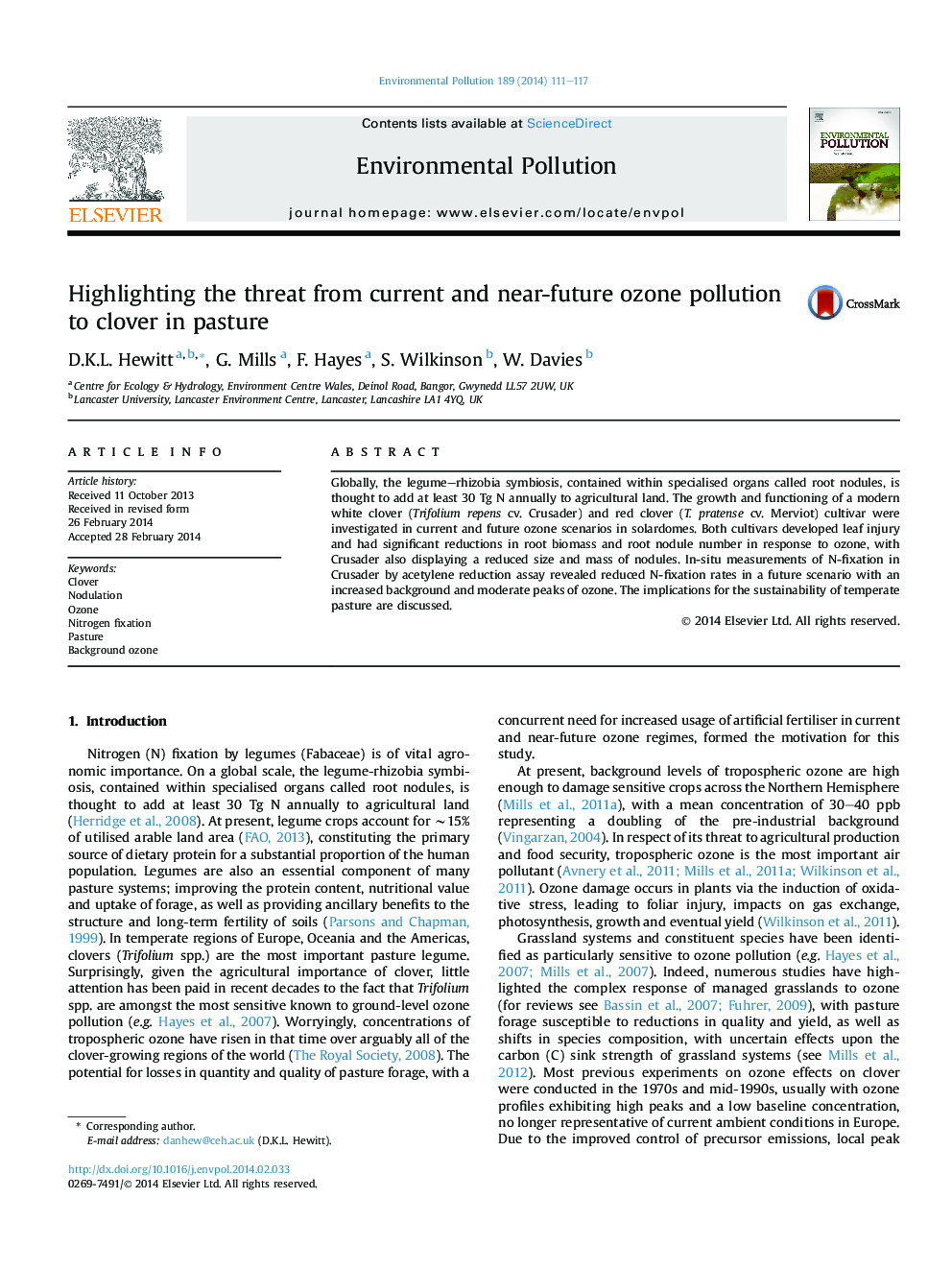| Article ID | Journal | Published Year | Pages | File Type |
|---|---|---|---|---|
| 6316888 | Environmental Pollution | 2014 | 7 Pages |
â¢Red and white clover cultivars displayed significant increases in foliar injury in increased ozone.â¢Both cultivars had reductions in total and root biomass and root nodule number.â¢White clover had a reduced size and mass of root nodules and reduced N-fixation rates.
Globally, the legume-rhizobia symbiosis, contained within specialised organs called root nodules, is thought to add at least 30 Tg N annually to agricultural land. The growth and functioning of a modern white clover (Trifolium repens cv. Crusader) and red clover (T. pratense cv. Merviot) cultivar were investigated in current and future ozone scenarios in solardomes. Both cultivars developed leaf injury and had significant reductions in root biomass and root nodule number in response to ozone, with Crusader also displaying a reduced size and mass of nodules. In-situ measurements of N-fixation in Crusader by acetylene reduction assay revealed reduced N-fixation rates in a future scenario with an increased background and moderate peaks of ozone. The implications for the sustainability of temperate pasture are discussed.
